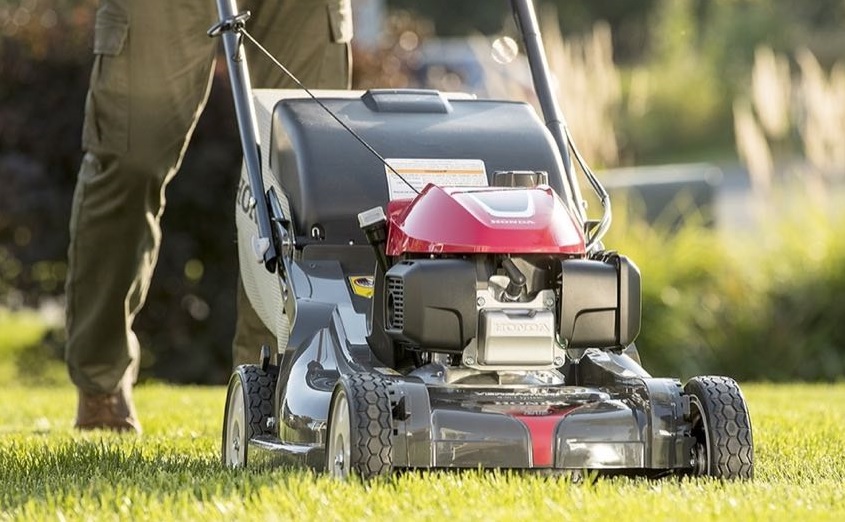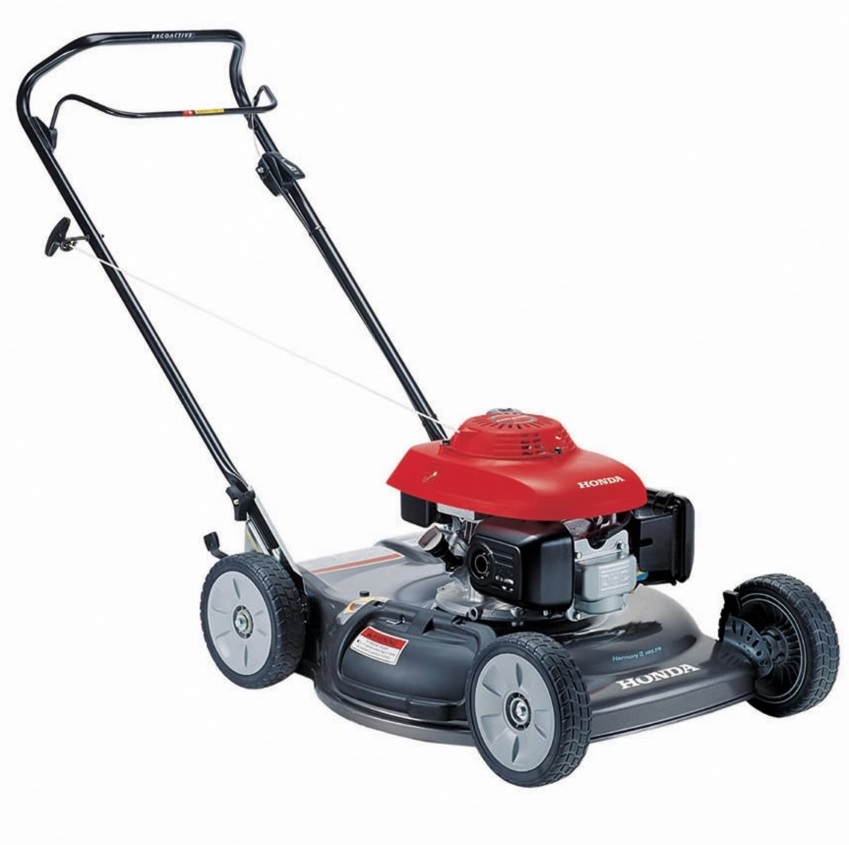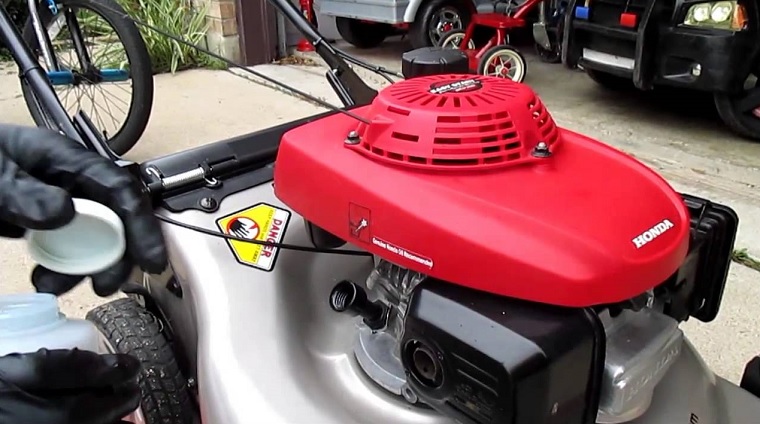
Change Oil In Honda Lawn Mower
Necessary to successfully learn how to change the oil in Honda Lawn Mower? If you haven’t changed the oil in your lawnmower before, you might not be used to it. Whether you’ve had one for a while or you recently bought a brand-new one from the renowned automaker, Honda, after some use you start to question whether your device needs an oil change or not. Additionally, you consider what kind of oil best meets the requirements of your apparatus. Since this essay includes all the material pertinent to the topic, we have good news for you. In addition, we address some of the often-asked queries regarding Honda lawnmowers and lawnmowers in general.
If you want your equipment to last a long time and prevent repeated maintenance costs, oil changes are important. In general, it is advised to change the oil no later than 50 hours of operation. It may be time for an oil change if you simply turned on your device after a lengthy break for the season. Typically, the oil needs to be replaced quickly when it turns black on the dipstick.

Honda Lawn Mower Oil Change Instructions
- Start your engine and let it warm up to ensure easy oil drainage.
- Use the appropriate drainage technique to remove the used oil from the engine.
- Fill your Honda lawnmower’s oil tank to the appropriate level by checking the dipstick often.
- Remove any oil that has been spilled from the work area and let it settle in the engine.
We advise you to continue reading this post since you will find the information useful.
How To Change The Oil In Honda Lawn Mower
The procedures listed below will give you a thorough procedure and safety precautions for performing an oil change.
Pre-change Procedures
You should be sure to follow the necessary safety precautions before performing an oil change on your Honda lawnmower:
For a while, rev the engine: Start the engine, and then let it run for some time (preferably for 15 minutes). Your engine will warm up as a result, warming the oil in the process. As a result, the oil flows more easily, making the draining process straightforward.
Clean the oil filling area. The oil cap frequently collects a lot of outside material. Even the greasy region around it attracts sand from the air. Please gently clean the area with a towel and remove any dirt with a gasoline cap.
Execute oil drainage! Utilizing this method, you tilt the Honda lawnmower so that the air filter is facing up (this prevents the fuel from entering into the air filter). The oil cap is then opened, allowing the entire contents to drip into the pan. Make sure you avoid touching the hot oil, which might damage your skin.
Just use an oil drain plug: Oil drain plugs are not always included with lawn mowers. To find where the oil drain plug is on your machine, see the Honda’s user manual. It often sits underneath the lawnmower deck. Once more, tilting the mower to the side would make it easier to see the plug and remove any surrounding debris. After that, empty the oil into the container by opening the cap with a hand-held tool while keeping your mower upright.
Siphon Method
This technique involves the use of a siphon pump. These pumps transfer the oil into a built-in tank where it can subsequently be recycled. By manually pushing/pushing the piston, you should be able to extract the oil. Since there are no oil spills in the office, it is a cleaner and more effective method of oil drainage.
Adding new oil: The third step is to add new oil to the oil tank after you have purchased the appropriate type of oil for your lawnmower. Place your lawnmower upright and continue to pour little amounts of oil. The best course of action would
be to continuously check your dipstick to gauge the oil level. Up until the desired level is reached, keep adding oil.
Cleanup the work area: It is advised to leave your mower upright for 5 minutes after pouring fresh oil to let the oil to settle. Replace the oil dipstick and check the oil level once again. Reconnect your spark plug after which you should take off the sandwich bag covering the gasoline cap. Clean up any oil that has gotten on your flooring. Take your dried oil to a disposal dealer, as this is advised.

Common Questions:
What Occurs When You Don’t Change The Oil In A Lawnmower
If an oil change isn’t done right away, the engine wears down more quickly. Additionally, most lawnmowers lack an oil filter. Therefore, it doesn’t take long for the oil’s quality to decline. In addition to air-cooling, the oil is also in charge of cooling the engine. The engine’s service life falls short of the manufacturer’s expected lifespan. As a result, one should constantly take care to make sure the equipment gets timely oil changes.
Can automobile oil be used in a lawnmower?
A lawnmower frequently uses SAE 30 motor oil. According to the user’s manual for some machines, 10W-30 or 10W-40 oils should be used. In cars, these types of oil are frequently used. They can therefore be applied to lawnmowers.
Exactly what is SAE 30 oil?
The Society of Automotive Engineers rates SAE 30 as a motor oil with a viscosity value of 30 (SAE). These scores typically range from 0 to 50. The viscosity has to do with how thick or flowable the oil is. In chilly weather, thinner oils function better (with low viscosity). In contrast, heavy oils are employed when the temperature is high. One grade of oil, SAE 30, is thicker than lower grades. Common applications for it include air-cooled small engines like lawn mowers and chainsaws. Most motor oils are multi-grade, which means they work well in various weather conditions.

Does SAE 30 correspond to 10W-30?
The designation 10W-30 means that the oil has a viscosity of 10W when the engine is cold and 30 when it is heated. It would be beneficial if you took the temperature into account when making this decision. In situations where its elevated temperature and fluctuation are not substantial, SAE-30 is a single-grade oil that works well. So in contrast, you can use 10W-30 if the weather in your area keeps changing. In comparison to SAE-30, it also enhances cold-starting at lower temperatures. Therefore, using SAE 30 or 10W-30 does not significantly affect engine performance if you live in a moderate or mild region.
Do lawnmower engines have two or four strokes?
Lawnmower engines are available in 2-stroke and 4-stroke versions. A 2-stroke engine completes the full cycle of combustion and power during the crankshaft revolution. In a 4-stroke engine, the entire cycle is completed in two crankshaft revolutions. Since there is no separate reservoir for oil in 2-stroke engines, the two are combined. Contrarily, 4-stroke engines need an oil reservoir to adequately lubricate the connecting rods and crankshafts.
Words Of advice:
Lubricant oils are essential in ensuring that engine components experience minimal wear and have the longest possible service life. For optimum performance, the oil should always be changed at the beginning of the season. You may occasionally need a second oil change at the end of the season owing to heavy use. It is advised that you choose the correct oil grade in accordance with the manufacturer’s recommendations.



